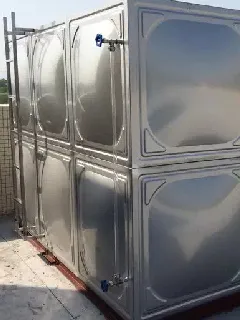loading...
- No. 9, Xingyuan South Street, Dongwaihuan Road, Zaoqiang County, Hengshui, Hebei, China
- admin@zjcomposites.com
- +86 15097380338
- Welcome to visit our website!
FRP Pressure Vessel Design and Applications in Modern Engineering Solutions
Understanding FRP Pressure Vessels Design and Applications
Fiber-Reinforced Plastic (FRP) pressure vessels have gained significant attention in various industrial applications due to their lightweight, corrosion-resistant properties, and high strength-to-weight ratio. These vessels are constructed by combining a polymer matrix, typically epoxy or polyester, with reinforcing fibers, such as glass, carbon, or aramid. This advanced composite material provides remarkable benefits over traditional metal vessels, particularly in harsh environments.
Advantages of FRP Pressure Vessels
One of the primary advantages of FRP pressure vessels is their ability to resist corrosion. Unlike metal vessels that can rust and degrade when exposed to harsh chemicals or moisture, FRP vessels maintain their integrity over time, thereby reducing maintenance costs and improving longevity. This characteristic is especially valuable in the chemical processing, oil and gas, and waste management industries, where vessels often come into contact with aggressive substances.
Another benefit of FRP vessels is their lightweight nature. This attribute allows for easier handling, transportation, and installation compared to steel or other metal materials. The reduced weight translates into lower shipping costs and less structural support required during installation, which can result in overall savings for projects.
Furthermore, the design flexibility of FRP composites allows engineers to create pressure vessels in a variety of shapes and sizes without significantly increasing manufacturing costs. This adaptability means FRP vessels can be tailored to specific applications, thereby optimizing functionality and performance.
Design Considerations
frp pressure vessels

The design and manufacturing of FRP pressure vessels are governed by various standards and regulations, such as ASME (American Society of Mechanical Engineers) and ISO (International Organization for Standardization). These guidelines ensure that vessels are capable of withstanding internal pressures, external loads, and environmental conditions without failure.
Key factors in the design process include material selection, fiber orientation, and the thickness of the vessel walls. Engineers must consider the type of fluids the vessel will contain, the maximum allowable pressures, and the temperatures involved. Additionally, the method of fabrication—such as filament winding or resin transfer molding—can significantly influence the final properties of the vessel.
Applications of FRP Pressure Vessels
FRP pressure vessels have a wide array of applications across different industries. In the chemical sector, they are frequently used for storage and transportation of caustic chemicals, where corrosion resistance is critical. In water treatment facilities, FRP vessels play a vital role in filtration systems and chemical dosing, providing durability while minimizing maintenance requirements.
The oil and gas industry also benefits from FRP vessels, which are employed in various applications including separators, storage tanks, and pressure vessels that must withstand harsh conditions. Their lightweight properties help reduce transportation costs and installation time, making them ideal for offshore operations.
Conclusion
With their unique properties and wide range of applications, FRP pressure vessels represent a forward-thinking solution in materials engineering. As industries continue to seek ways to improve efficiency, reduce costs, and extend the lifespan of their equipment, FRP pressure vessels are poised to become an even more prominent choice. As technology advances, further innovations in the design and manufacturing processes of these vessels are likely to emerge, making them an essential component of modern industrial operations.
-
The Rise of FRP Profiles: Strong, Lightweight, and Built to LastNewsJul.14,2025
-
SMC Panel Tanks: A Modern Water Storage Solution for All EnvironmentsNewsJul.14,2025
-
GRP Grating: A Modern Solution for Safe and Durable Access SystemsNewsJul.14,2025
-
Galvanized Steel Water Tanks: Durable, Reliable, and Ready for UseNewsJul.14,2025
-
FRP Mini Mesh Grating: The Safer, Smarter Flooring SolutionNewsJul.14,2025
-
Exploring FRP Vessels: Durable Solutions for Modern Fluid HandlingNewsJul.14,2025
-
GRP Structures: The Future of Lightweight, High-Performance EngineeringNewsJun.20,2025
